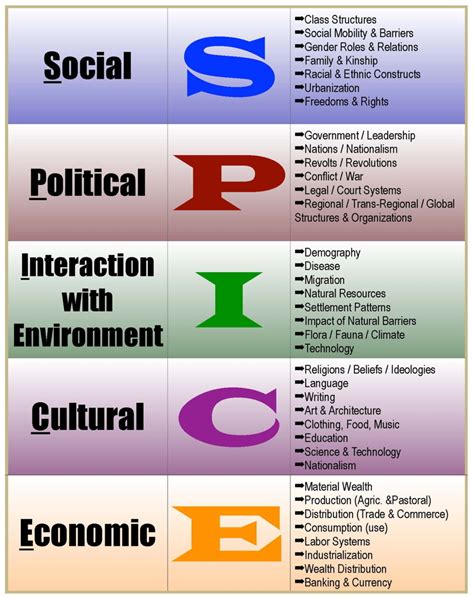The Spice Trade: A Historical Overview
The spice trade has played a pivotal role in shaping world history, spanning centuries and leaving an indelible mark on cultures, economies, and cuisines around the globe. Spices, prized for their culinary, medicinal, and religious significance, have driven exploration, fueled empires, and sparked wars.

Ancient Origins
The earliest evidence of spice trade dates back to ancient civilizations in Mesopotamia and Egypt, where spices such as cinnamon, cumin, and pepper were used for culinary and medicinal purposes. In the 1st century AD, the Roman Empire became a major importer of spices from the East, particularly from India and China.
The Silk Road
The Silk Road, an extensive network of trade routes connecting East and West, played a crucial role in facilitating the spice trade. Spices from the Far East, such as cloves, nutmeg, and ginger, were transported along these routes, reaching Europe and the Middle East.
The Age of Exploration
The Age of Exploration, beginning in the 15th century, saw European powers competing to establish control over the spice trade. Portugal and Spain led the charge, followed by the Netherlands, England, and France. European explorers sought new routes to the East, leading to the discovery of the Americas and the circumnavigation of the globe.
The Spice Islands
The Spice Islands, located in present-day Indonesia, became a major center of the spice trade. The Dutch East India Company established a monopoly on the nutmeg and clove trade, while the Portuguese controlled the cinnamon trade. The intense competition for spices led to wars and bloodshed, as European powers sought to protect their interests.
Global Impact
The spice trade has had a profound impact on world history. It:
- Stimulated economic growth and the rise of maritime empires.
- Introduced new flavors and aromas to cuisines worldwide.
- Facilitated cultural exchange and the spread of ideas.
- Fueled exploration and the expansion of human knowledge.
Spice Chart: A Visual Representation
The following table provides an overview of key spices, their origins, and their significance in world history:
| Spice | Origin | Historical Significance |
|---|---|---|
| Black Pepper | India | Prized by ancient Romans, used as currency in medieval Europe |
| Cinnamon | Sri Lanka | Used in Chinese medicine for centuries, popularized in Europe during the Middle Ages |
| Cloves | Indonesia | A highly sought-after spice in the Middle Ages, used in cuisine, medicine, and perfumes |
| Ginger | Southeast Asia | Used as a digestive aid in ancient China, popular in Europe for its medicinal properties |
| Nutmeg | Indonesia | A valuable spice used in cuisine, medicine, and cosmetics in ancient Egypt and Rome |
| Saffron | Greece | Prized for its vibrant color, used as a dye and in cuisine |
| Star Anise | China | Used in traditional Chinese medicine, became popular in Europe as a spice in the 17th century |
| Turmeric | India | A key ingredient in Indian cuisine, also used in Ayurvedic medicine |
The Importance of Spices
Culinary Significance
Spices have transformed cuisines around the world, adding flavor, aroma, and complexity to dishes. They have influenced culinary traditions, shaped cultural identities, and inspired culinary innovations.
Medicinal Benefits
Many spices possess medicinal properties and have been used in traditional medicine for centuries. Ginger, for example, is known for its anti-inflammatory effects, while cinnamon has been shown to regulate blood sugar levels.
Religious and Ritualistic Use
Spices have played a significant role in religious ceremonies and rituals. Saffron, for example, is used in Hindu and Buddhist rituals, while frankincense and myrrh have been used in religious practices for centuries.
Economic Value
Spices have been highly valued commodities throughout history. They have been used as currency, traded for luxury goods, and secured the fortunes of empires.
Innovation and New Applications
The spice industry is constantly evolving, with new applications emerging all the time. Scientists are exploring the potential of spices in:
- Pharmaceuticals: Developing new drugs and therapies based on the medicinal properties of spices.
- Cosmetics: Creating natural skincare and haircare products using spice extracts.
- Biofuels: Investigating the use of spices as alternative energy sources.
Frequently Asked Questions
What was the most expensive spice in history?
Saffron has consistently been one of the most expensive spices due to its labor-intensive harvesting and processing.
How did spices impact the European economy?
The spice trade fueled economic growth in Europe, leading to the rise of maritime empires and the establishment of trading companies.
What are the main spice-producing regions today?
India, Indonesia, China, Vietnam, and Sri Lanka are major spice-producing regions.
How can I incorporate more spices into my diet?
Experiment with different spices in your cooking, add them to smoothies or teas, or use them in spice blends for marinades and rubs.
What precautions should I take when using spices?
Some spices can interact with medications, so consult with a healthcare professional before using them for medicinal purposes.
